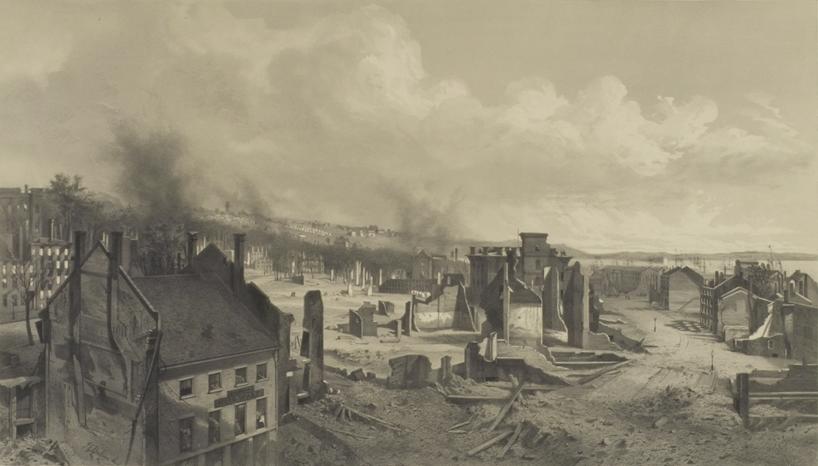By: Max Lorber, Staff Writer
No one is quite sure how the momentous fire started in Portland on July 4, 1866. The weather conditions in the summer of 1866 made Portland particularly susceptible to the spread of fire. It was particularly dry and hot, creating conditions that turned most of the structures into tinder bundles.
“It was probably the single most critical event in the history of this city,” said Abraham Schechter, the special collections librarian and archivist at the Portland Public Library.
It is hard to overstate how massively catastrophic this fire was. At the time, no other fire in American history had been so destructive.
Some speculate that sparks shot out from the railroad tracks as an engine passed by, igniting dry wood shavings around a boat shop on the wharf. A more widely accepted theory is that a young boy, in celebration of Independence Day, innocently lit a fire-cracker and threw it over his head, causing the boat shop to erupt into flames. Either way, the wind rapidly carried the fire east on Commercial Street, first taking a sugarhouse and then a planing mill on York Street. The fire continued to fan out.
The flames engulfed nearly every building in downtown Portland. Iron support beams melted from the terrific heat. Edifices made of brick and granite fell to the ground. The center of the city was reduced to a pile of rubble in the span of a few hours. From Commercial Street to Munjoy Hill, the destruction resembled the aftermath of a carpet bombing.
Panic spread throughout the city. The streets became clogged with refugees fleeing the devastation. The evening sky was illuminated with an ominous glow and large burning cinders were lifted into the air by the winds.
The Portland Fire Department of that era was not equipped to handle a fire this immense. Augusta, Bath, Biddeford, Gardiner, Lewiston and Hallowell were all telegraphed appeals for assistance. Before any help could arrive, the flames were beyond control.
The flames finally stopped spreading in the early morning hours of July 5.
In the aftermath of the fire, much of the industry and financial institutions of Portland were decimated. Many hotels and attractions were also destroyed. The city had been booming for some time, particularly in the shipping industry. The fallout of this momentous event stunted Portland’s growth considerably.
Letters of support and donations were sent in from all over the country. Schechter discovered a box of these letters and a cache of stereoscopic film negatives documenting the aftereffects of the stored in the back of the public library. He carefully scanned these invaluable primary sources for the Portland Public Library archives.
Money from donations across the country helped quicken the pace of rebuilding the city. By late August 1866, much of the rubble had been cleared and over 300 buildings were near completion. Nearly all the Vicotorian-style brick buildings in the Old Port neighborhood of Portland were built during the reconstruction.

